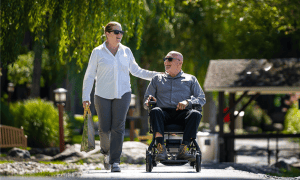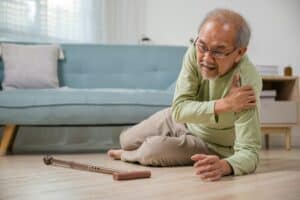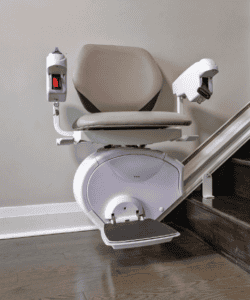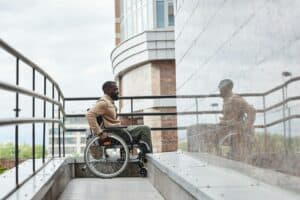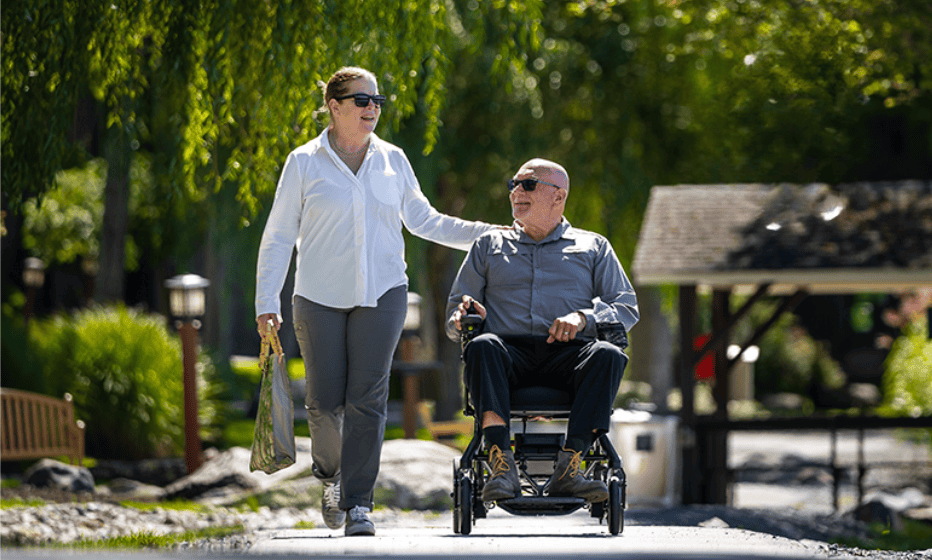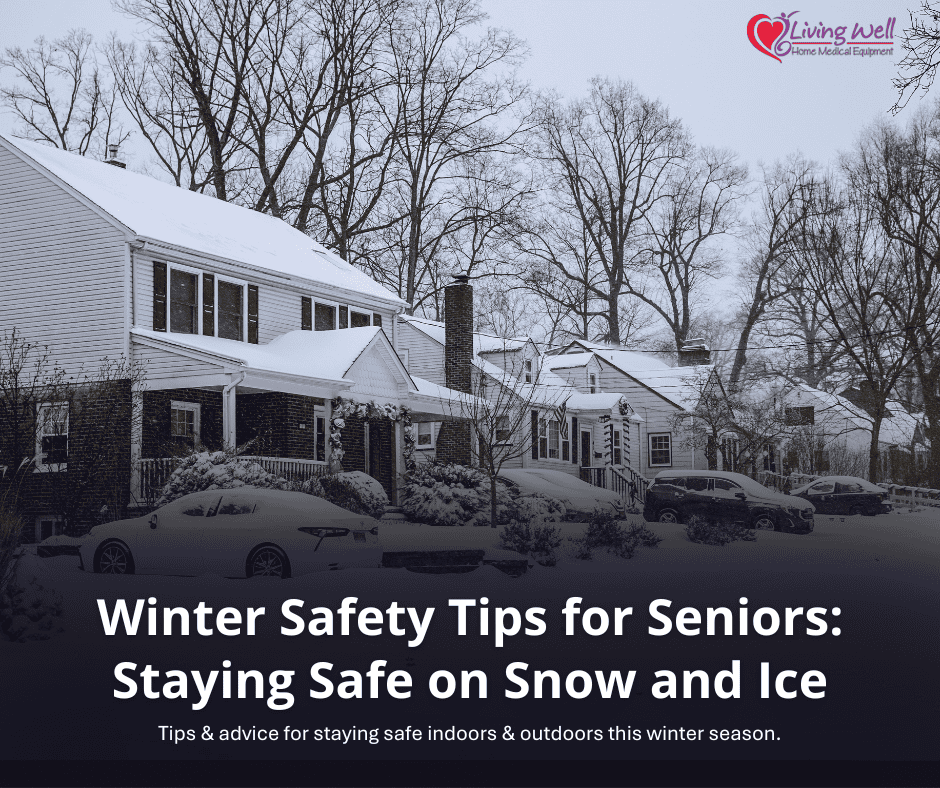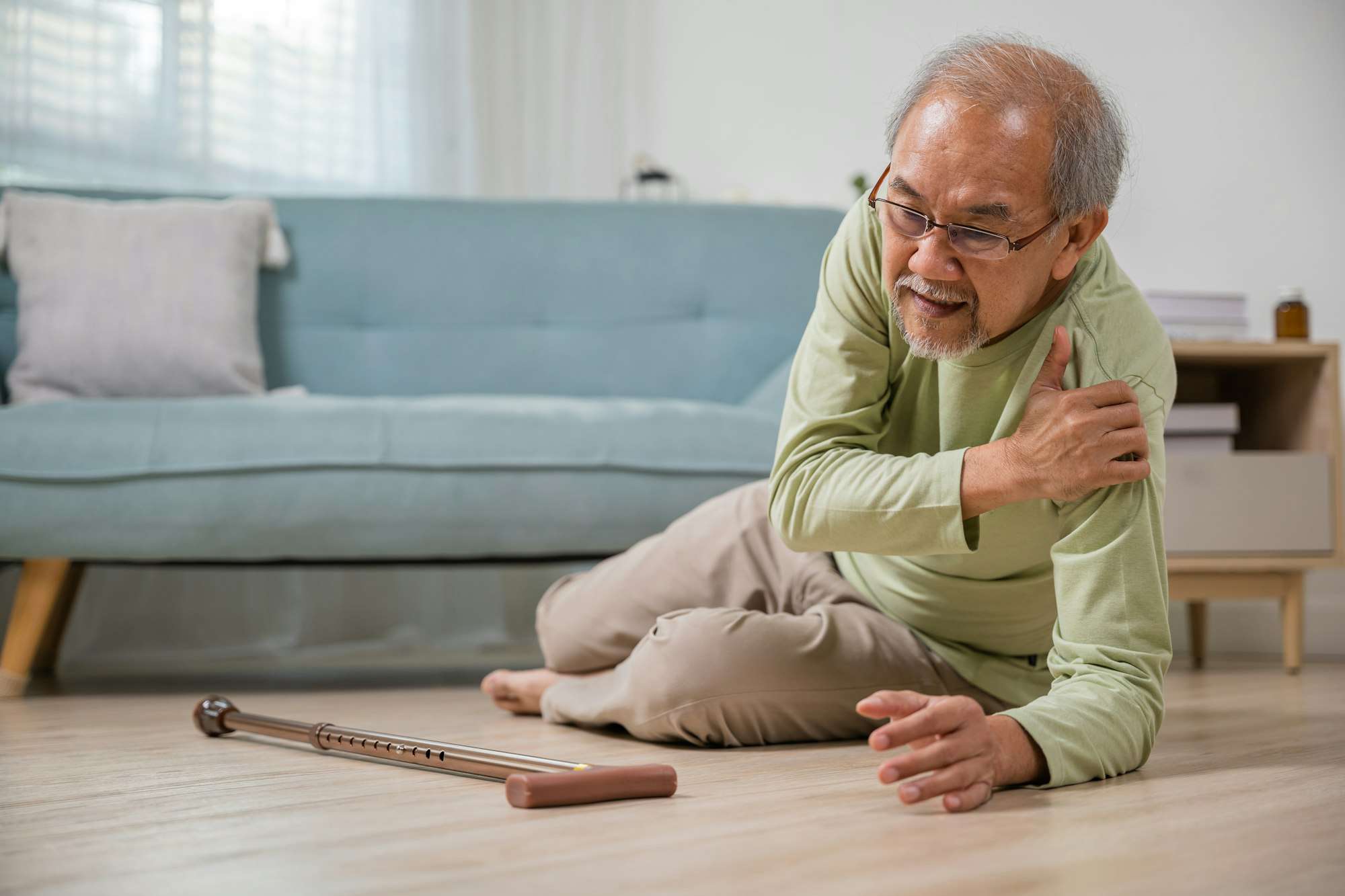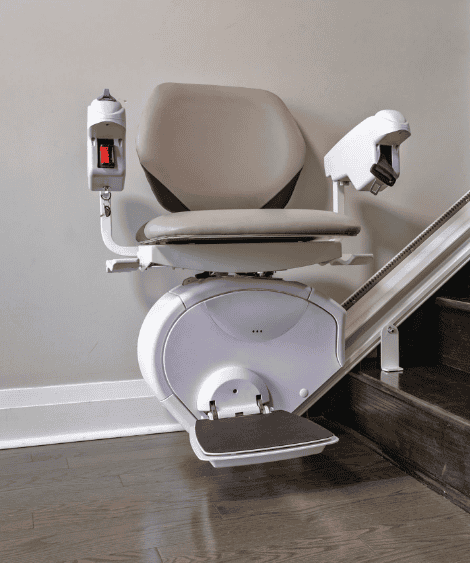A fall at home can be life-changing — especially for older adults. According to the Public Health Agency of Canada, falls are the leading cause of injury among seniors, accounting for 85% of all injury-related hospitalizations for people aged 65 and older. Many of these falls happen right where we should feel safest — in our own homes.
The good news? Most falls are preventable. With a combination of simple home modifications, appropriate equipment, and supportive guidance from healthcare experts and mobility specialists, older adults can continue to live safely and independently at home.
At Living Well Home Medical Equipment in Peterborough, we help seniors, caregivers, and families create safe, accessible living spaces with practical solutions and medical equipment designed to reduce fall risk. Check out this blog to learn more about how you can prevent falls at home.
Why Falls Happen — and How to Prevent Them
Falls often happen due to a mix of factors, including age-related changes like reduced balance, muscle weakness, vision issues, and slower reaction time. However, environmental hazards like loose rugs, poor lighting, slippery bathrooms, and stairs without railings make the risk much higher.
The key to preventing falls is recognizing both physical risk factors and home hazards and then making practical changes to reduce those risks. For example, the most common room for seniors to fall in is the bathroom, a solution to this could be installing grab bars or ensuring you have a nonslip mat on the floor. Additionally, if you know you are susceptible to falls you may consider contacting your doctor or occupational therapist to get fitted for a mobility aid like a walker or rollator.
As you age you become increasingly more likely to fall at home, and most adults don’t take the proper precautions to mitigate the risk. Here are some key tips for make your home less of a falling hazard.
Key Home Safety Areas & Practical Tips
1. Bathroom Safety
Bathrooms are one of the most common places for falls because of slippery surfaces and awkward transfers. You can immediately make this space safer by:
- Installing grab bars near the toilet and inside the tub/shower: brag bars that are installed directly into the wall are safest as suction grab bars are not meant to bear your entire body weight.
- Using a sturdy shower bench or bath chair: most bathroom products come with suction feet, preventing slips on wet surfaces.
- Adding a raised toilet seat or toilet safety frame for easier transfers: both can be installed directly to the toilet or can be free standing depending on your unique circumstances.
- Applying non-slip mats or strips inside the tub and on bathroom floors: nonslip strips in the tub or shower reduce the risk of falling while you’re using the shower and while you’re entering & exiting.
- Considering a hand-held showerhead for seated showering: most cable shower heads come with 60” tubing, we offer custom handheld shower heads with 84” of tubing to make it easier for those with shower chairs.
Need help choosing the right bathroom safety equipment? We carry grab bars, shower seats, bath lifts, raised toilet seats and more check out our Bathroom Safety page for more information.

2. Flooring, Clutter & Pathways
Clear, safe walking paths make a big difference in preventing falls. Focus on:
- Removing loose throw rugs or securing them with non-slip backing: double sided tape can work for this if you’re in a pinch.
- Ensuring pathways are free from cords, clutter, pet beds and furniture: if you have cords that need to run across the floor or from room to room, consider taping the cords to the baseboards so that they are not in the middle of the floor.
- Repairing or replacing uneven flooring: while waiting for repairs you can mark areas of uneven flooring with green painters tape so you don’t forget to watch your step.
- Using contrasting colours around stairs, thresholds or step-down areas for better visibility.
Even small adjustments like clearing floor space can have a major impact on your safety. One of the most common complaints we hear is that people are uncomfortable in narrow hallways or rooms with lots of clutter, especially considering they can’t use a mobility aid in a cramped room. Reducing clutter will drastically reduce the risk of falling in your home.
3. Lighting & Visibility
Good lighting is essential for reducing falls — especially at night. Seniors are almost twice as likely to fall when lighting is dim or inconsistent.
- Use nightlights in bedrooms, hallways and bathrooms.
- Install motion-sensor lights in entryways, staircases and alongside major walking routes.
- Keep light switches easy to reach (or consider remote/voice-activated lighting), clap on clap off lights exist outside of movies and television, and they’re very practical.
- Use contrasting paint or tape to make stairs and edges more visible: green painters’ tape is cheap and effective!
Improving lighting often costs very little but greatly improves safety and confidence. A cost friendly solution to this issue is putting green painters tape on light switches, that way you can always identify where they are and turn on a light before you walk through your home.
4. Stair Safety & Home Accessibility
Stairs can be one of the biggest hazards in the home, particularly for seniors with limited mobility or balance challenges. We’ve all slipped going up or down the stairs before, and while younger folks can probably just walk it off, seniors are at risk of severe injury or worse, so it is of the utmost importance that stairs are made as safe as possible if a senior will be using them often.
- Ensure secure handrails are installed on both sides of stairs. Don’t have handrails? Give us a call today to learn more about our installation services and our wide array of handrail types, textures, and colours: 705-740-2650
- Add non-slip stair treads or carpet runners.
- Use bright lighting above staircases.
- Consider relocating living spaces to the main floor when possible. A lot of seniors opt for moving their bedroom to the first floor of their home if feasible, this reduces the need for you to climb your stairs, thus reducing your risk of falling on them.
- If stairs are becoming difficult, consider installing a stair lift or ramp for improved access.
At Living Well HME, we offer professional stair lift installation and safety assessments in Peterborough, Cobourg, Bowmanville, and the surrounding areas. Check out our Stair Lift Installation page for more information.

5. Mobility Aids & Assistive Equipment
Sometimes the right equipment is the key to avoiding falls. Commonly used aids include:
- Walkers and rollators – ideal for seniors who need support for balance and endurance.
- Canes – good for those with mild balance challenges.
- Wheelchairs and power chairs – for people who experience frequent instability or fatigue.
- Lift chairs – help safely transition from sitting to standing without straining joints.
- Hospital beds and adjustable beds – increase safety and ease for transfers in and out of bed.
Getting the right fit and equipment type matters. Many falls happen when using improperly fitted or incorrect mobility aids. Our team works with Occupational Therapists (OTs) and families to recommend properly fitted equipment to match a person’s needs. If you’re wondering what mobility aid is right for you, contact your doctor to get a referral for an OT to determine what you need for your unique situation.
Professional Home Safety Assessments
Knowing what equipment is needed — and whether you may qualify for funding — can be confusing. That’s where professional support helps.
If you’re interested in learning more about funding options or home safety assessments, give us a call, we’re happy to help — 705-740-2650.
How Living Well HME Can Help
Living Well Home Medical Equipment has been supporting seniors, families and caregivers in Peterborough, Cobourg, Bowmanville and the surrounding Ontario region for over 20 years. We offer:
- A wide range of mobility devices, safety equipment and home accessibility solutions.
- Local, knowledgeable service — including professional installations and assessments.
- Friendly in-store support, phone consultations and in-home evaluations.
- Equipment guidance for seniors, families and Occupational Therapists.
We don’t just sell equipment — we help you live safely, comfortably and independently.
Take the First Step: Make Your Home Safer Today
You don’t need to do everything at once. Even small changes can prevent major injuries. Whether you’re a senior aging at home, a caregiver supporting a loved one, or an OT looking for trusted equipment providers — we’re here to help.
📞 Call us at 705-740-2650
📍 Visit one of our showrooms, click Here for locations.
🌐 Or browse our mobility aids, bathroom safety, stair lifts and fall-prevention equipment on our website
Let’s create a safer home — together.

